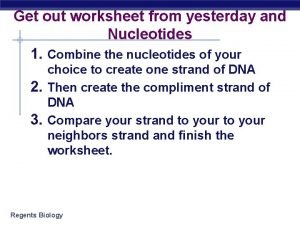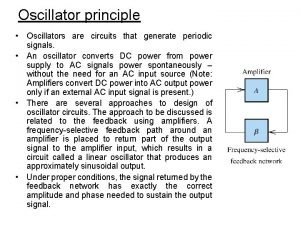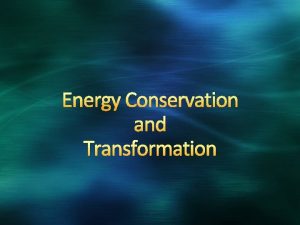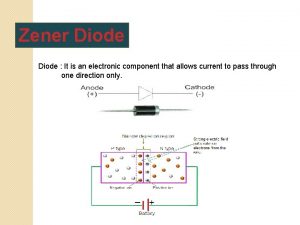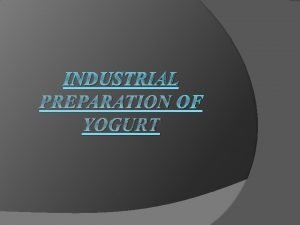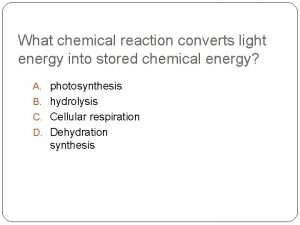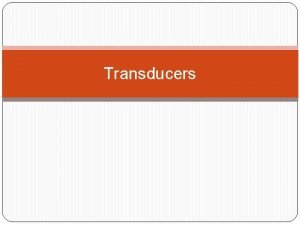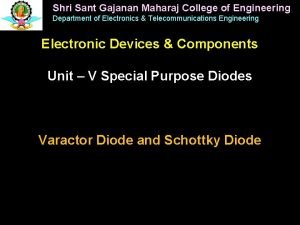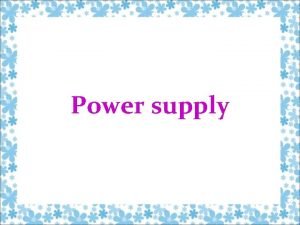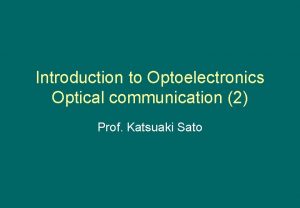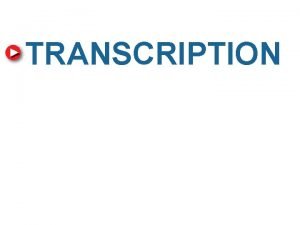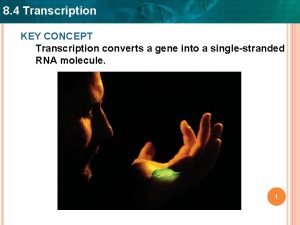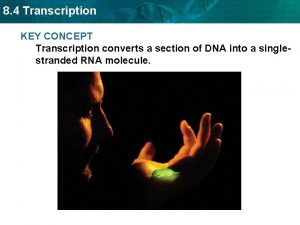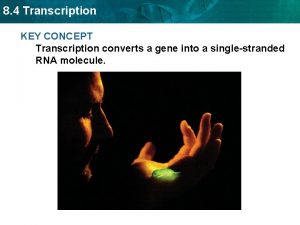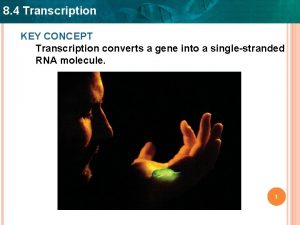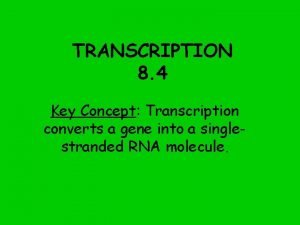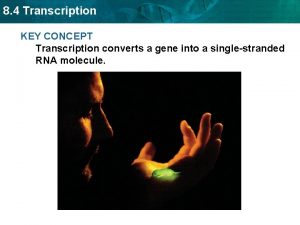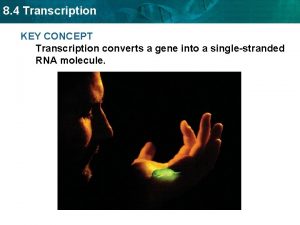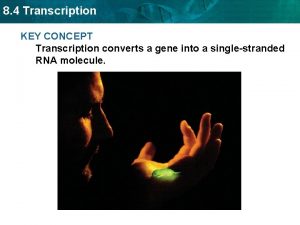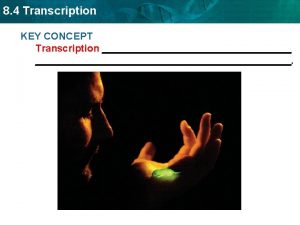8 4 Transcription KEY CONCEPT Transcription converts a












- Slides: 12

8. 4 Transcription KEY CONCEPT Transcription converts a gene into a single-stranded RNA molecule.

8. 4 Transcription RNA carries DNA’s instructions. The central dogma states that information flows in one direction from DNA to RNA to proteins. • The central dogma includes three processes. – Replication – Transcription – Translation • RNA is a link between DNA and proteins. replication transcription translation

8. 4 Transcription • RNA differs from DNA in three major ways. – RNA has a ribose sugar. – RNA has uracil instead of thymine. – RNA is a single-stranded structure.

8. 4 Transcription makes three types of RNA. • Transcription copies DNA to make a strand of RNA. • The transcription complex recognizes the start of a gene and unwinds or unzips a segment of DNA. • Nucleotides pair with one strand of the DNA

8. 4 Transcription – The RNA strand detaches from the DNA once the gene is transcribed. RNA

8. 4 Transcription • Transcription makes three types of RNA. – Messenger RNA (m. RNA) carries the message that will be translated to form a protein. – Ribosomal RNA (r. RNA) forms part of ribosomes where proteins are made. – Transfer RNA (t. RNA) brings amino acids from the cytoplasm to a ribosome. • Replication copies all the DNA; Transcription copies a gene. • Replication makes one copy; Transcription can make many copies.

8. 4 Transcription KEY CONCEPT Translation converts an m. RNA message into a polypeptide, or protein.

8. 4 Transcription Amino acids are coded by m. RNA base sequences. • Translation converts m. RNA messages into polypeptides. • A codon is a sequence of three nucleotides that codes for an amino acid. codon for methionine (Met) codon for leucine (Leu)

8. 4 Transcription • The genetic code matches each codon to its amino acid or function. The genetic code matches each RNA codon with its amino acid or function. – three stop codons – one start codon, codes for methionine

8. 4 Transcription • A change in the order in which codons are read changes the resulting protein. • Regardless of the organism, codons code for the same amino acid.

8. 4 Transcription Amino acids are linked to become a protein. • An anticodon is a set of three nucleotides that is complementary to an m. RNA codon. • An anticodon is carried by a t. RNA.

8. 4 Transcription • Ribosomes consist of two subunits. – The large subunit has three binding sites for t. RNA. – The small subunit binds to m. RNA.
 Rna matching
Rna matching Chapter 4 lesson 4: metamorphic rocks answer key
Chapter 4 lesson 4: metamorphic rocks answer key Key concept builder lesson 1 what are waves answer key
Key concept builder lesson 1 what are waves answer key Oscillator principle
Oscillator principle A hairdryer converts ____ energy into ____ energy.
A hairdryer converts ____ energy into ____ energy. Learning outcome generator
Learning outcome generator Pn junction diode, converts
Pn junction diode, converts Lactobacillus bulgaricus converts lactose to *
Lactobacillus bulgaricus converts lactose to * ________ converts light energy into chemical energy. *
________ converts light energy into chemical energy. * Mechanical transducer
Mechanical transducer Pn junction diode, converts
Pn junction diode, converts Line regulation
Line regulation Pn junction diode, converts
Pn junction diode, converts
